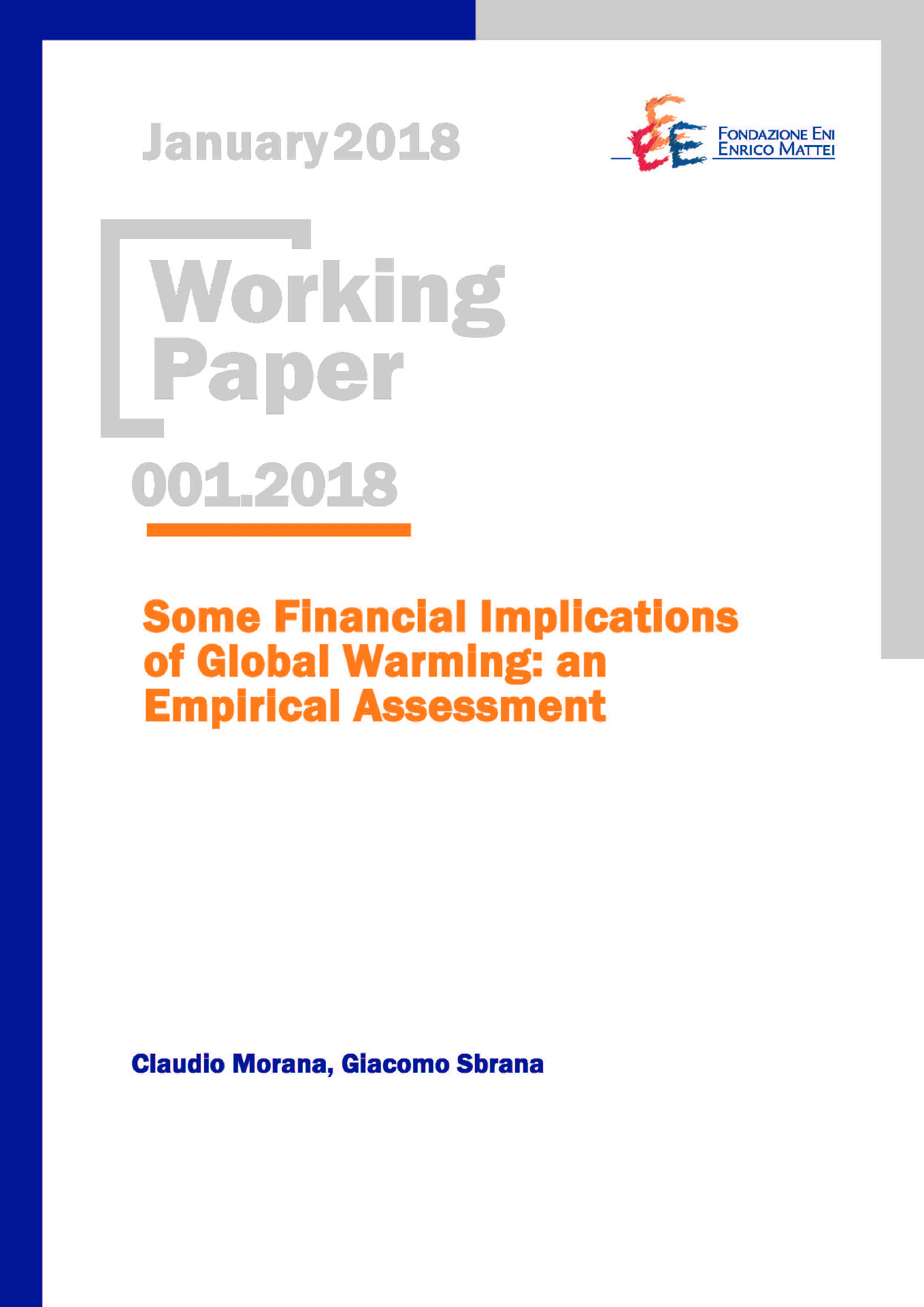Some Financial Implications of Global Warming: an Empirical Assessment

19.01.2018
G11, G23, C32
Cat Bonds, Risk Premia/Multiples, Temperature Anomalies, Global Warming, Radiative Forcing, ENSO, El Niño, Atlantic Hurricanes, Dynamic Conditional Correlation Model
Climate and Sustainable Innovation
Massimo Tavoni
Concurrent with the rapid development of the market for catastrophe (cat) bonds, a steady decline in their risk premia has been observed. Whether the latter trend is consistent with the evolution of natural disasters risk is an open question. Indeed, a large share of outstanding risk capital in the cat bonds market appears to be exposed to some climate change-related risk as, for instance, hurricane risk, which global warming is expected to enhance. This paper addresses the above issue by assessing the global warming evidence, its implications for the natural environment and the drivers of cat bonds risk premia. We find that radiative forcing, i.e. the net insolation absorbed by the Earth, drives the warming trend in temperature anomalies and the trend evolution of natural phenomena, such as ENSO and Atlantic hurricanes, enhancing their disruptive effects. Hence, in the light of the ongoing contributions of human activity to radiative forcing, i.e., greenhouse gases emissions, natural disasters risk appears to be on a raising trend. Yet, the latter does not appear to have been accurately priced in the cat bonds market so far. In fact, while we find that the falling trend in cat bonds multiples is accounted by the expansionary monetary stance pursued by the Fed, we do also find evidence of significant undervaluation of natural disasters risk.
***
Suggested citation: Morana, C, G. Sbrana, (2018), ‘Quantifying Non-cooperative Climate Engineering’, Nota di Lavoro 1.2018, Milano, Italy: Fondazione Eni Enrico Mattei
